[ DECLASSIFIED SEPTEMBER 29, 2024 ]
[ CLASSIFIED DHC DOCUMENT ]
After investigating documents given by the German Luftwaffe to the company by 2017, it is concluded that the J-62K had a heavier successor to it. The aforementioned documents were preserved and kept confidential by the Luftwaffe from the rest of the world. The aircraft is designated as the L-84, an aircraft that made it the production stage and made larger production numbers than the J-62 line.
DESCRIPTION
Introduction
The L-84 is a large, heavy multirole fighter and bomber aircraft designed by the founder and co-founder of the DHC as a prototype that would serve alongside the Stuka for the Luftwaffe in the Second World War.
Document I: Design
The Luftwaffe had handed out a new contract for an aircraft capable of large payloads to destroy enemy ground placements on Europe and Allied shipping convoys at the Atlantic ocean. Using the money they earned from producing the J-62K, DHC founder [REDACTED] and co-founder [REDACTED] hired a small German crew of forty engineers, designers and weapon specialists, most of them skilled in their professions while some are new to the industry. The team, now known as the Dunkelhundkonzern, made an entirely new aircraft from scratch and put effort to avoid the problems that came with the J-62 line. The overall design was inspired by the American F6F Hellcat, but the overall size was larger and had a different canopy design. The canopy design was changed to reduce extra weight on the back of the aircraft. Instead of completely straight wings like from the J-62, the wings were angled upwards to move the center of lift upwards since the wings were placed low on the fuselage. The low fuselage placement was made to reduce undercarriage weight and height significantly from its predecessor. The aircraft didn't use a radial engine like its predecessors, but it used an inline engine that used contra-propellers. The inline engine was lighter than a radial one, and the contra-prop configuration gave the aircraft faster yet efficient flights. All these weight improvements reduced 4000 pounds from the original J-62 model, a large improvement for an aircraft produced by an independent contractor. Like the J-62K, a carrier landing hook was also added in anticipation of German aircraft carriers [most notably the KMS Graf Zeppelin] in the future.
Document II: Armament
The aircraft was mounted with six guns, with three for each wing. The same machine guns from the J-62K were to be used, but the Luftwaffe wanted guns that had guns with fire rate changes in a 30% margin. The private contractor group's weapon specialists made modifications to their guns to conform to the Luftwaffe's gun specifications. Its payload capability was a large feat, as the aircraft was capable of carrying a 3000lb payload with no hampers to its performance.
Document III: Performance Report
The aircraft was faster by 20 miles per hour than the J-62K but was just as maneuverable. But its roll response was faster than its predecessor, and just like its predecessor its maneuverability became formidable to that of the BF-109. With its maneuverability, the aircraft was capable in dogfighting. But because of its lumbering size, it was used more as a ground attacker instead of a fighter and bomber interceptor. The aircraft is to reach a speed of 340 miles per hour, but in numerous prototype flights it is said to reach up to 420 miles per hour when full throttle nosedives were performed. The aircraft is still as easy to takeoff and land like its predecessors.
1944 Luftwaffe Document Snippet
The L-84 was approved by the Luftwaffe for its large improvement from its predecessor. The aircraft produced 19 prototypes and 750 active units, with 150 of these active units put in reserve. The aircraft was used extensively in attacking Allied shipping convoys at the Atlantic ocean, and it was also used in divebombing runs alongside the Stuka back at Europe. With all the units they sold, the Dunkelhundkonzern made lots of money to pay their workers and even lots more to put aside for future aircraft projects. 296 active units were lost in war, with 105 shot down by enemy flak and 191 shot down by enemy aircraft.
ARMAMENT
The aircraft carries:
- 6x Wing Guns
- 14x Rockets
- 5x Torpedoes
ACTIVATION GROUPS
The AGs and their functions are listed by number:
- AG1 : Toggle Navigation Lights
- AG2 : Jettison Torpedo Set A
- AG3 : Jettison Torpedo Set B
- AG4 : N/A
- AG5 : Toggle Carrier Landing Hook
- AG6 : N/A
- AG7 : N/A
- AG8 : N/A
[CLASSIFIED]
Operation: Tödlicher Himmel
Briefing:
- Takeoff from Yeager Airport
- Destroy USS Tiny and its destroyer escorts
- Land on Avalanche Airport
Attack Procedures:
1) Approach the targets from a heading of around 10 to 20 degrees heading north-northeast
2) Once targets are around 1.5 kilometers away, put throttle down to around 20%
3) Right after throttling down, descend to an altitude of around 75 to 150 feet in a 30 degree angle
4) Once in the appropriate altitude for attack, stabilize altitude using Trim and aim the bombing cursor at the water near the escort nearest to you
Remember:
- If you land direct hits on the destroyers with the torpedoes, the explosive potential of the payloads are not maximized because they are not primed.
- To prime the payload torpedoes and maximize their explosive potential, make sure to drop the torpedoes into the water that is point-blank range of the escorts.
5) Once destroyer escort is around 0.5 to 0.2 miles away and when the bombing cursor is in the right position, activate either AG2 or AG3 to drop a pair of torpedoes
Remember:
- DON'T activate both torpedo jettison groups, doing so will render you with four torpedoes striking only one destroyer escort
- After you hit a torpedo jettison group, this is when all hell goes loose
- Perform Steps 6 to 9 as quickly as possible
6) As soon as you drop a pair of torpedoes, push throttle all the way up to 100%
Remember:
- DON'T change your heading
- DON'T change your altitude
- Roll the wings to aim the torpedo trajectory, but DON'T pitch or yaw
7) Repeat Step 5
8) As soon as you drop your other pair of torpedoes, PULL UP HARD
9) Perform evasive maneuvers while waiting for your torpedoes to hit the last escort
10) Once both destroyer escorts are destroyed, attack USS Tiny in any way you want
Remember:
- At this point, you only have 14 rockets and one torpedo
- Each payload counts, so be careful not to miss your rockets and torpedo
[CLASSIFIED]
[ CLASSIFIED DHC DOCUMENT ]
[ DECLASSIFIED SEPTEMBER 29, 2024 ]
Specifications
Spotlights
- masotan15 5.6 years ago
General Characteristics
- Predecessor VERY HARD - Challenge - WWII Naval Attack
- Created On Android
- Wingspan 41.8ft (12.7m)
- Length 35.5ft (10.8m)
- Height 14.3ft (4.4m)
- Empty Weight 11,305lbs (5,128kg)
- Loaded Weight 14,448lbs (6,553kg)
Performance
- Horse Power/Weight Ratio 0.761
- Wing Loading 18.2lbs/ft2 (88.7kg/m2)
- Wing Area 795.4ft2 (73.9m2)
- Drag Points 8953
Parts
- Number of Parts 238
- Control Surfaces 13
- Performance Cost 946

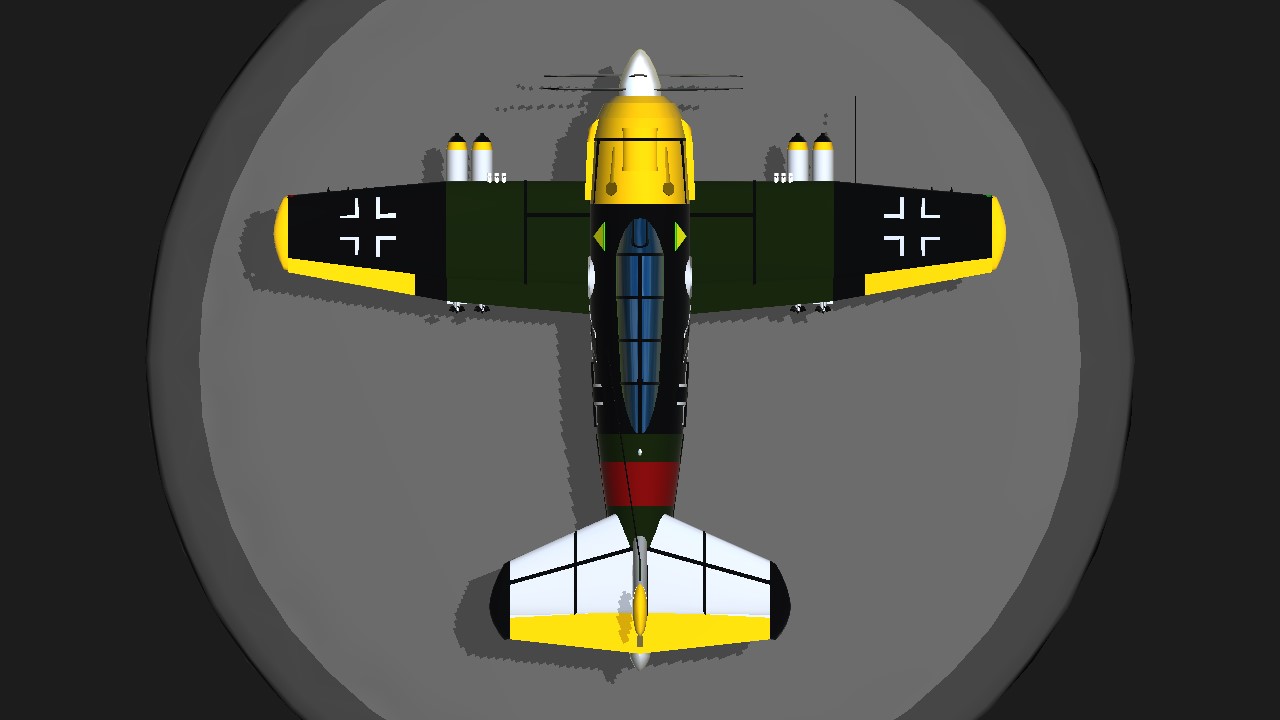
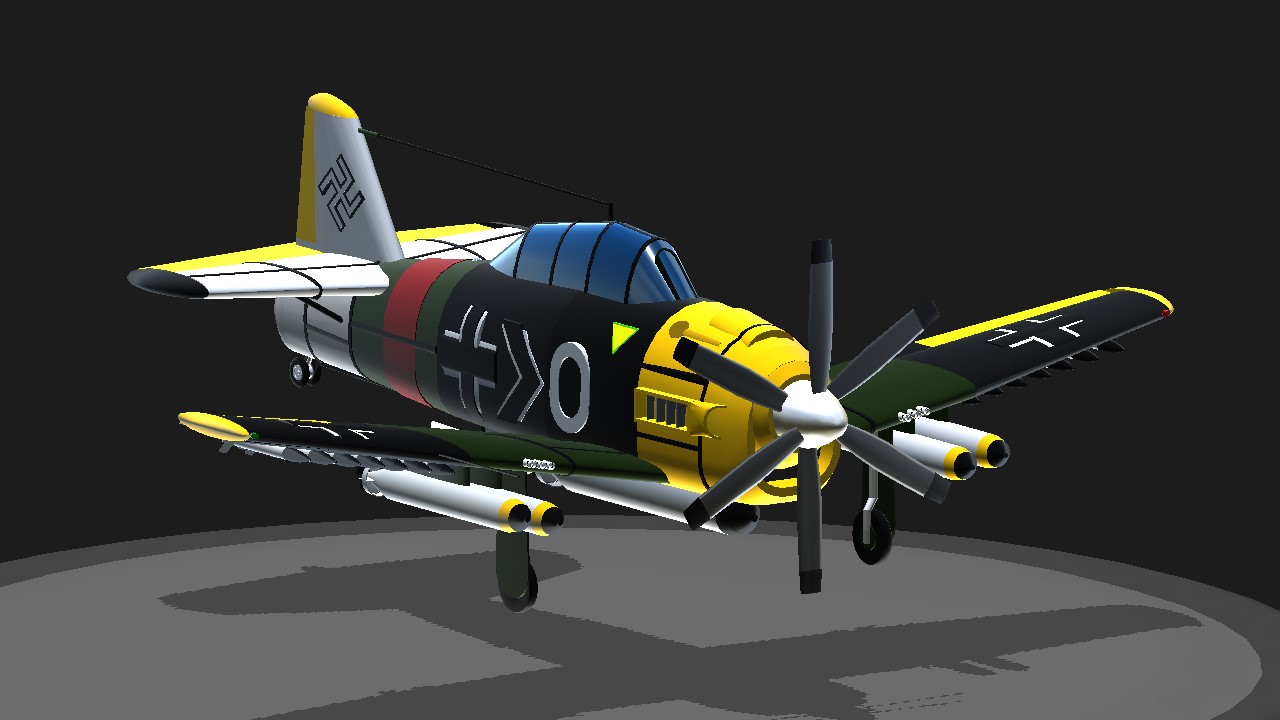
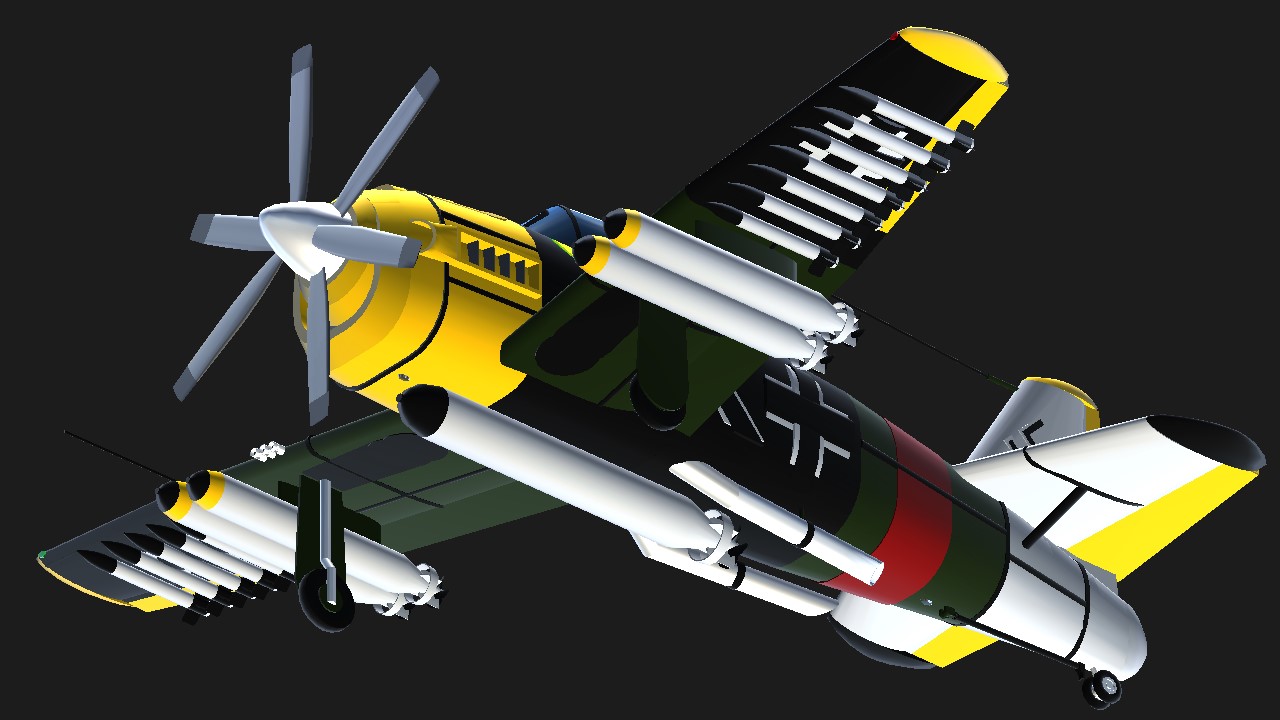
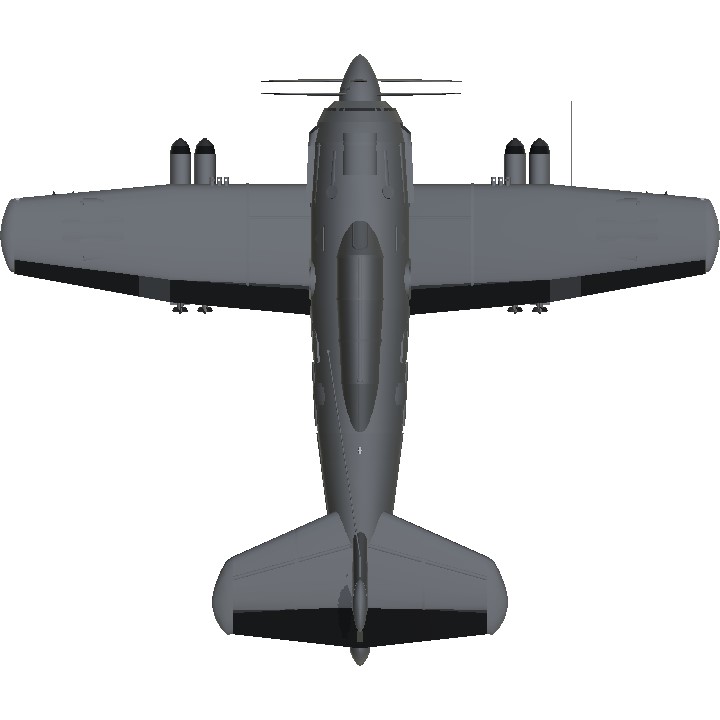
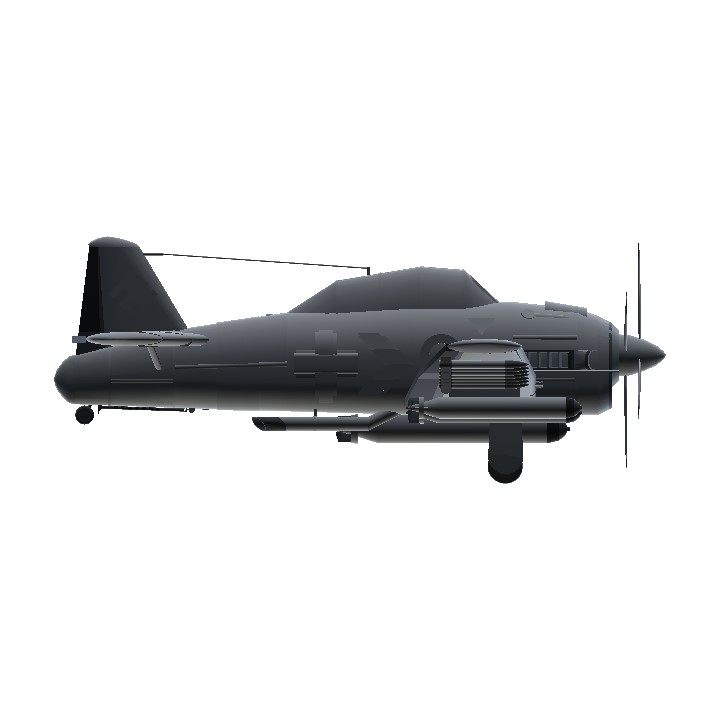
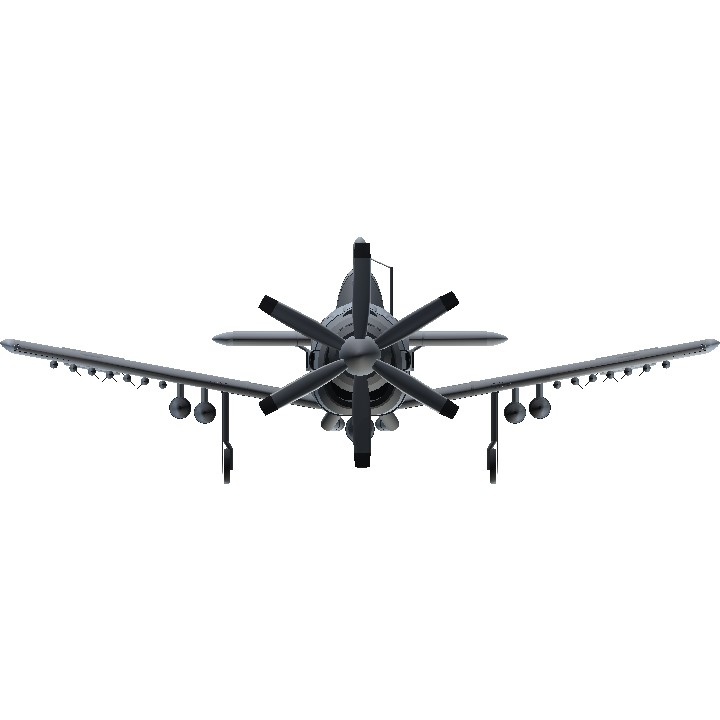
Ah, thank you all for the compliments! It is well appreciated!
Really well made! All the details on this are really incredible and give it life
ooo lore! I like lore!
Review soon mate.
You are getting 2 extra points for that description. This looks good!